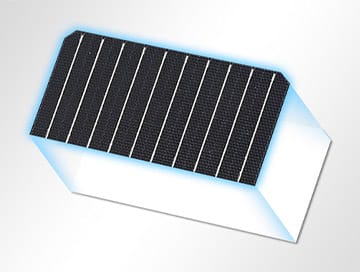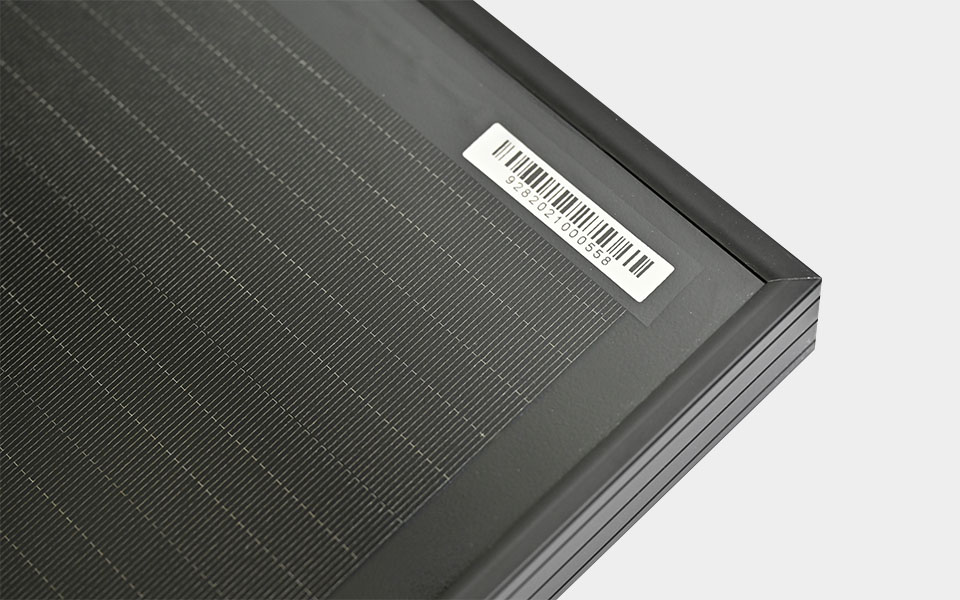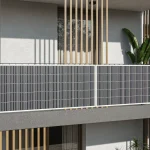In the ever-evolving solar industry, manufacturers are constantly seeking ways to improve efficiency, durability, and power output. One of the latest innovations making waves in the sector is the shingled-cell solar panel. Unlike traditional solar modules, which rely on larger, intact cells connected by visible busbars, shingled panels employ a unique cell arrangement that boosts performance without increasing the size of the module. So, what exactly makes shingled-cell technology a game-changer, and how does it stack up against traditional designs? Let’s dive in.
What Are Shingled-Cell Solar Panels?
Shingled-cell solar panels differ from their traditional counterparts in one key way: the solar cells are cut into smaller strips and overlapped in a “shingling” pattern. This design removes the gaps between cells, allowing for more silicon material to be packed into a single module. This overlapping configuration increases the efficiency and power output of the panel, as it maximizes the active area exposed to sunlight.
Unlike half-cut or tiling ribbon modules, shingled modules eliminate the need for visible busbars by using electrically conductive adhesives to connect the cell strips. This allows for a more streamlined appearance and improved power output, as there are fewer interruptions in the flow of electricity across the panel.
The Evolution of Solar Panel Design
To understand why shingled-cell technology is a significant advancement, it’s helpful to trace the development of solar panel designs. The journey can be categorized into four main stages:
- Standard Solar Panels:The original, full-cell solar panels with visible busbars and significant gaps between cells.
- Half-Cut Designs:These panels cut cells in half to reduce electrical resistance, improving efficiency slightly.
- Tiling Ribbon Technology:In this design, solar cells are overlapped with a ribbon but do not physically touch, minimizing cell gaps while retaining some busbar visibility.
- Shingled-Cell Panels:The most recent evolution, where solar cells are sliced into strips, overlapped, and adhered with conductive glue, eliminating both gaps and busbars.
As you move through these stages, each design offers incremental improvements in efficiency and aesthetics, but shingling stands at the peak, offering the highest efficiency potential without moving into more expensive technologies like heterojunction cells.
Advantages of Shingled-Cell Solar Panels
1. Increased Efficiency
One of the primary benefits of shingled-cell panels is their higher efficiency. By eliminating gaps between cells and increasing the active surface area, these panels can produce more power from the same footprint. For example, companies like Solaria and SunPower have developed shingled modules that can achieve efficiencies as high as 20.2%, significantly higher than traditional panels.
2. Improved Aesthetics
Traditional panels often feature visible busbars and noticeable gaps between cells, which can be aesthetically unappealing, especially in residential installations. Shingled panels, however, offer a sleeker, all-black appearance with no visible busbars, making them a more attractive option for homeowners looking for clean energy without sacrificing curb appeal.

3. Higher Durability
Shingled panels typically use electrically conductive adhesives, which provide some flexibility to the cell strips. This can make the panels more resilient to thermal expansion and contraction, improving their longevity. Additionally, the lack of busbars reduces points of potential failure. For instance, Seraphim Solar’s shingled modules are designed to withstand mechanical stresses more effectively than traditional designs.
4. Maximizing Power Density
The ability to pack more silicon into a given space means that shingled modules offer higher power densities. This is particularly important for installations with limited space, such as rooftops or mobile applications like RVs, where every square inch matters. SunPower’s P-Series of shingled modules, for instance, can produce 350 watts of power with minimal cell spacing.

Shingled Panels vs. Tiling Ribbon
It’s worth noting that while shingled-cell panels offer superior performance, they are not the only innovation aimed at reducing intercell gaps. JinkoSolar’s Tiling Ribbon technology uses a flexible ribbon to overlap half-cut cells. While this design reduces gaps and improves efficiency compared to standard modules, it still falls short of the performance of true shingled panels due to the presence of visible busbars and the fact that the cells do not physically touch.
The Future of Shingled-Cell Panels
Shingled-cell solar technology is widely considered the zenith of traditional crystalline silicon-based solar panels. While other technologies, such as heterojunction cells, offer even higher efficiency by combining crystalline and amorphous silicon, they are also significantly more expensive. Shingled panels offer an optimal balance between performance and cost, making them an attractive option for both residential and commercial installations.
Moreover, as solar manufacturers continue to refine the process, costs are expected to drop, making shingled modules more accessible. For now, shingled-cell technology represents the cutting edge of solar panel design, offering the highest efficiency available within the realm of traditional silicon cells.
Conclusion
Shingled-cell solar panels mark a significant leap forward in solar technology, delivering higher efficiency, improved aesthetics, and enhanced durability compared to traditional designs. As the industry continues to innovate, shingled technology may become the standard for high-performance solar modules, offering more power within a smaller footprint. Whether you’re looking to maximize your rooftop space or invest in more efficient solar technology, shingled-cell panels are certainly worth considering.







